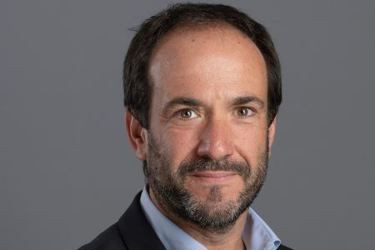Matching Water Trends To Technologies

By Kevin Westerling,
@KevinOnWater

The CEO of one of the world’s most prominent water technology companies talks about solving far-reaching water challenges, as well as local treatment issues, through innovation.
Vincent Caillaud may be fairly new to the role of Chief Executive Officer at Veolia Water Technologies & Solutions (formerly SUEZ – Water Technologies & Solutions), but his experience runs deep, having joined the company’s SIDEM subsidiary as a project manager in 2002 before ascending to C-level positions from 2012 to the present. Prior to his current role, he served as CEO of Veolia Water Technologies from its home base in France, a long way from his new headquarters in Trevose, PA.
Location matters, but Veolia's scope is broad and international — much like the water issues the company hopes to solve. To that end, I spoke with Caillaud for his take on the trending issues that demand attention and what the industry is doing in response. We covered broad trends and their influence, while also drilling down on specific challenges and solutions.
"As I step into this new role, I bring my unwavering dedication to sustainability and innovation," he told me. "I'm passionate about making a meaningful impact on the world and believe my background and experiences have prepared me for this next step."
Read on to get Caillaud's insights on the current state of the industry and his vision for the future.
What are the macro issues and trends shaping the direction of water management, and how are you addressing them?
There's an undeniable urgency in recognizing water as a rapidly diminishing resource, a trend that's only expected to intensify in the coming years. To address this, we are dedicated to expanding our efforts in water reuse, not just for existing applications but for a broader range of uses. Collaboration with stakeholders will be essential to unlock the full potential of water reuse technologies.
Digitalization is set to revolutionize the water industry. We view digital technologies as a means to optimize plant operations, enhance process efficiency, and bolster the resilience of our water infrastructure. Bridging the gap between operators and cutting-edge technology remains our top priority.
Lastly, decarbonization is imperative. We are committed to reducing our carbon footprint across all operations and product lifecycles. Sustainability is not just a buzzword; it's a fundamental aspect of designing, manufacturing, and delivering our technologies.
Essentially, the water industry's future will be defined by these three pillars: urgently addressing water scarcity, embracing digitalization, and leading decarbonization efforts. We are enthusiastic about these prospects and are fully committed to realizing them. While the challenges are significant, we also see immense hope and optimism in our ability to shape a sustainable future for the water sector. Our collaboration with municipal and industrial partners will be instrumental in achieving these objectives and ensuring a responsible water future for all.
What are the more ‘micro’ or specific trends or challenges driving innovation?
One significant development is the emergence of advanced water treatment technologies designed to effectively address various water quality issues, including reducing contaminants like PFAS. The industry can selectively capture harmful compounds from water sources through specialized adsorption and ion exchange processes, enhancing water quality and safety.
Another noteworthy innovation is the development of monitoring and treatment solutions that enable real-time detection of emerging contaminants. This capability allows the industry to respond promptly to evolving water quality challenges, ensuring the continued safety of water supplies. Some of these solutions, such as the Sievers TOC-R3 online TOC analyzer, help industrial manufacturers optimize processes and minimize disruptions and costs.
Some specific water management practices related to sustainability include decentralized water treatment systems, harvesting rainwater, and recycling wastewater. By adopting these solutions, the industry can reduce the strain on traditional water resources and better manage the impacts of droughts and floods.
Reuse definitely needs to be a bigger part of the equation. How is implementation and innovation trending within that area?
Advanced purification methods, decentralized treatment systems, and cutting-edge technologies — like ZeeNAMMOX and zeeDENSE — are revolutionizing how we treat wastewater. Building upon the success of ZeeLung MABR, which intensifies biological treatment and reduces energy consumption, zeeDENSE takes the treatment process a step further by incorporating continuous flow densification technology to also intensify treatment plant hydraulics. These innovations are crucial as they promote the sustainable use of treated wastewater for non-potable applications, significantly reducing the pressure on our finite freshwater resources. Seeing the industry taking significant strides towards creating a circular water economy is inspiring.
"Sustainability" seems to be part of every answer, so would you say that's the central theme in terms of future direction?
Yes, the pervasive emphasis on sustainability runs throughout the industry. It is a collective commitment that extends to all areas of growth and development, whether within established markets or emerging growth initiatives. The industry is dedicated to minimizing environmental footprints, delivering environmental and economic value to customers, recognizing the positive effects of products on both customers and the environment, such as emissions reduction, and fostering sustainable market developments like green hydrogen and potable reuse.
By adopting sustainable water management practices such as decentralized water treatment systems, harvesting rainwater, and recycling wastewater, the industry can reduce the strain on traditional water resources and better manage the impacts of droughts and floods.
Any final thoughts from a company/CEO perspective?
The trends we’re observing in our industry are both challenging and inspiring. They require us to remain at the cutting edge of technology and innovation while reaffirming our commitment to environmental responsibility and the well-being of the communities we serve. We are well-positioned to lead in this evolving landscape, leveraging our expertise and dedication to create a positive impact.
Learn more at www.watertechnologies.com.
